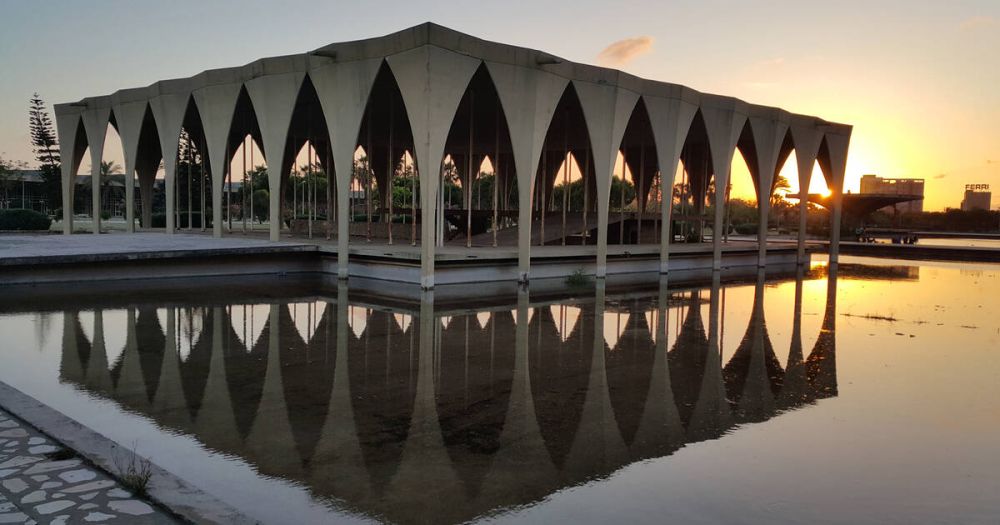

Located in Tripoli, the Rashid Karami International Fair (also known as Tripoli International Fair) is a prominent exhibition center designed by the legendary Brazilian architect Oscar Niemeyer. Inaugurated in the early 1960s, this location starkly reflects modernist architecture and represents one of Niemeyer's most significant international projects. Although intended to serve as a permanent fairground, the facility has experienced various periods of activity and inactivity, especially during the Lebanese Civil War.
As of recent, the Fair has witnessed a resurgence, transforming into a multipurpose venue that hosts cultural events, art exhibitions, and festivals, alongside its more traditional trade show functions. This pivot to diverse uses is part of Lebanon's efforts to repurpose historical and culturally significant sites for contemporary audiences and to bolster local tourism.
Baalbek, situated in Lebanon's Beqaa Valley, is home to one of the most spectacular ancient archaeological sites in the Middle East. Known for its colossal Roman temples, including the temples of Jupiter, Bacchus, and Venus, the ruins stand as a testament to the grandeur of imperial Roman architecture. Baalbek's history stretches back over 9000 years, with its peak coming during the Roman era when it was known as Heliopolis, or the "City of the Sun."
Today, the Baalbek Ruins are a UNESCO World Heritage site and a cornerstone of Lebanese tourism. The site is not just a draw for its historical significance but also for the annual Baalbek International Festival, which showcases music and performance arts within this sublime ancient backdrop. This convergence of historical marvel and contemporary culture enhances the visitor experience, offering a unique way to appreciate the ancient site.
Lebanon's history of tourism can be traced back to the 19th century when European travellers and scholars visited the region to explore its rich history and diverse culture. By the mid-20th century, Beirut, the capital city, was known as the "Paris of the Middle East" due to its vibrant cultural scene, night-life, and cosmopolitan nature. Tourists from around the world flocked to Lebanon to experience its unique mixture of Western and Eastern traditions, rich historical sites, and natural beauty.
Unfortunately, the onset of the Lebanese Civil War in 1975 led to a sharp decline in tourism. In recent years, Lebanon has been rebuilding its tourism industry, emphasizing its historical attractions, Mediterranean cuisine, and the inherent warmth of its people. Efforts to stabilize the country and promote its unique attractions have seen a steady growth in international visitors prior to the economic challenges and the 2020 Beirut port explosion.
The latest trend in Lebanese tourism involves sustainable practices and experiential travel, aimed at providing visitors with authentic and meaningful experiences while preserving the country’s cultural heritage and natural resources. Agritourism is also burgeoning, with tourists seeking out traditional Lebanese village experiences that offer local food, wine tasting tours, and hikes in the country’s picturesque landscapes.
Additionally, Lebanon is investing in digital marketing campaigns and virtual reality experiences to showcase its destinations, aiming to adapt to the changing dynamics of global travel especially in the wake of the COVID-19 pandemic.
In conclusion, Lebanon's tourism industry is on the path of rediscovery, aiming to attract tourists by highlighting its ancient treasures like the Rashid Karami International Fair and the Baalbek Ruins while staying on course with sustainable and authentic travel experiences. Despite challenges, the Lebanese spirit of cultural richness and resilience continues to shine through, inviting visitors to explore its many wonders.